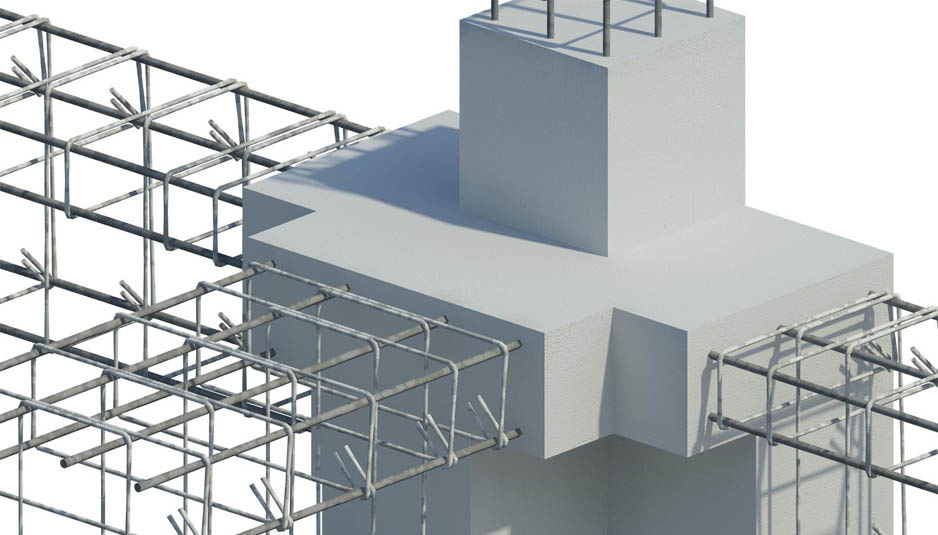The principle of linear transformation: the end of fifty years of controversy
This Technical Note will try to explain why there are no secondary moments due to linear transformation of tendons

adpaloha.altervista.org
It was Yves Guyon (1899-1975) who in 1945 proposed the property of linear transformation of prestressing tendons for the analysis of statically indetermined structures during the elastic range. He demonstrated that two tendons with the same profile between supports having the same anchorage points and varying the tendons vertically over the intermediate supports then the prestressing moments and the corresponding pressure line would remain unaffected, the reason being that the only variation of the forces produced by the different tendons would occur at the supports and therefore they would be cancelled by the opposite reactions coming from the supports. This explanation has proven to be insufficiently clear and a controversy over the existence of secondary moments has arisen over the past five decades.
This Technical Note will try to explain why there are no secondary moments due to linear transformation of tendons.
PRESTRESSING MOMENTS
Prestressing moments are the result of forces exerted by the tendon on the structure. Usually the profile of tendons is parabolic creating a uniform upward load which for equilibrium is balanced by downward loads at or near the supports.
For a simply supported beam the tendon profile coincides with the pressure line and the bending moment has a similar profile with a value at each point equal to ‘Pe’, where ‘P’ is the prestressing force and ‘e’ is the eccentricity to the neutral axis. The situation is different when we consider a continuous beam or a statically indetermined structure because the upward load from the tendons will create bending moments over the intermediate supports and the tendon profile, in the majority of cases, will not follow the resulting bending moment profile.
The only exception is when the tendon profile is concordant with the bending moment it produces, in other words the positive and negative ordinates are proportional to the positive and negative bending moments. In this case the deformation exerted by the tendon on the continuous beam will be zero at the supports creating no hyperstatic reactions.
In my view the basis of the controversy about secondary moments originates in trying to explain a hyperstatic structure using statics. The prestressing moment was split into primary and secondary moments, primary moment having the same definition as the simply supported beam ‘Pe’ and secondary moment as the difference between the prestressing moment and the primary moment: ‘M – Pe’. These definitions could be called the ontological argument for their existence but they do not exist in practice while the prestressing moment is the only moment that exists.
HYPERSTATIC REACTIONS
There are no hyperstatic reactions when the tendon profile is concordant as mentioned above. In practical cases the tendon is non-concordant creating hyperstatic reactions. The reason for the non-concordance in practical cases can be attributed to the benefit of maximizing the positive and negative eccentricities and maintaining the necessary concrete cover. Normally for a tendon to be concordant its eccentricity at the intermediate supports would have to be above the top of the beam therefore the usual linear transformation is to move the tendon profile down at the intermediate supports creating downward reactions at the ends. If we start with a concordant tendon and its zero hyperstatic reactions and move it down at the intermediate supportswhat occurs is that the slope at the end supports increases and that increase in slope multiplied by the prestressing force ‘P’ produces the hyperstatic reaction.
It has to be emphasized that hyperstatic reactions occur when non-concordant tendons are used and only during the elastic behaviour of the continuous beam. When this beam is subjected to increasing loads beyond the point of cracking, the beam does not behave elastically anymore and the reactions at the supports do not increase in linear proportion to the additional load. When the load reaches a point that hinges (ductile sections at ultimate moment) are formed at the supports the continuity that caused hyperstatic reactions during the elastic range is no longer there and the member behaves like a series of simply supported spans with known values of the bending moments at their ends. This is the reason why in laboratory tests the hyperstatic reactions have been found to disappear at the formation of the final hinge.
PRINCIPLE OF LINEAR TRANSFORMATION
The principle could be defined as: “Provided that the tendon curvatures within each span remain unchanged, the moments due to prestress in a continuous beam are not affected by varying the tendon eccentricities over internal supports”
To prove the principle of linear transformation I have chosen a continuous double span beam prestressed along its centre of gravity as shown on Figure 1.
Under the prestress force ‘PH’ the beam will shorten axially and because the beam remains co-linear at supports A, B and C there will be no hyperstatic reactions and therefore it is a concordant tendon. The prestressing moment is zero and the resulting stresses on the continuous beam due to prestressing are a constant ‘PH/A’ throughout where ‘A’ is the area of the cross section.
Let us linearly transform the prestressing tendon by lowering it by a distance ‘y’ at support B from the concordant location as shown on Figure 2.
The tendency of the non-concordant tendon profile is to lift the centre of the beam and a reaction ‘RB = 2PV’ is necessary to maintain co-linearity with supports A and C. The value of the reactions at A and C are: ‘RA = RC = PV = PH(y/L)’. These reactions are referred to as hyperstatic reactions and will occur when the tendon profile is not concordant which the majority of cases in practice are the hyperstatic reactions created by lowering the tendon are exactly the same as the forces exerted by itin the opposite direction and they cancel each other at the supports therefore the hyperstatic reactions produce no secondary shears, no secondary moments and no secondary deflections along the length of the continuous beam.
The prestressing moment is zero and the resulting stresses are ‘PH/A’ throughout as in the original concordant tendon profile. For the more general case of parabolic profiles and several spans the same method is used to calculate the hyperstatic reactions which are equal to the prestressing force multiplied by the change in slope of the tendon. For the case of support A the change in slope will be ‘y/L’ where ‘y’ is the vertical distance from the concordant tendon to the actual tendon profile at support B and the hyperstatic reaction RA becomes equal to ‘PH(y/L)’. Nevertheless all these calculations are of little value because they are caused by an equal and opposite force from the tendon and cancel each other at the supports resulting in no secondary shears, moments nor deflections.
All these effects are implied in the principle of linear transformation but they have been ignored or misinterpreted over the past seventy years.
CONCLUSION
It has been shown that the linear transformation of prestressing tendons in continuous beams although it produces hyperstatic reactions at the supports it does not cause secondary shears, secondary moments nor secondary deflections.
Furthermore the hyperstatic reactions occur only during the elastic behaviour of the statically indetermined structure and they tend to disappear as plastic hinges are formed.
The consequence of this clarification of the principle of linear transformation not only simplifies the design by not having to calculate fictitious secondary moments but more importantly it prevents errors in the calculation of the design bending moment.
Finally the Structural Concrete Building Code (ACI 318-11) would have to be amended by deleting ―the moments due to reactions induced by prestressing (with a load factor of 1.0)‖ in Clause 18.10.3 and all references to ―secondary moments‖ in Clause R18.10.3. The Australian Concrete Structures Code AS 3600—2009 would have to be amended by deleting Clause 6.2.6 and any reference to it. The same applies to the Australian Bridge Design Code Part 5: Concrete AS 5100.5—2004 where Clause 7.2.7 would have to be deleted as well as the reference to secondary moments in Clause 7.2.9.
REFERENCES
Guyon Y, Prestressed Concrete, Vol II: Statically Indetermined Structures, Contractors Record Ltd, London, 1960 pp. 11-15.
Warner R F and Faulkes K A, Prestressed Concrete, Pitman Australia, 1979, p. 276.
American Concrete Institute, 2011,ACI 318-11 Building Code Requirements for Structural Concrete (ACI 318-11) and Commentary.
Standards Australia, 2009,AS 3600-2009: Concrete structures.
Standards Australia, 2004, AS 5100-2004: Bridge design.
Max Cordova – CE (UNI, Peru), MSc (Duke Univ., USA), Fulbright Scholar
